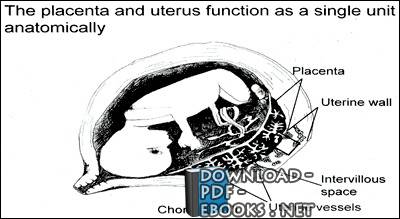📘 ❞ Obstetrics Kasr ِAl-Ainy department book fertilization implantation ❝ كتاب
كتب الطب البشري - 📖 كتاب ❞ Obstetrics Kasr ِAl-Ainy department book fertilization implantation ❝ 📖
█ _ 0 حصريا كتاب ❞ Obstetrics Kasr ِAl Ainy department book fertilization implantation ❝ 2024 implantation: Millions of sperms are deposited into the vagina during sexual intercourse The make their way through cervix uterus and then on to fallopian tubes As they swim along this numbers decline Only a few hundred sperm will get close egg During trip, prepare themselves meet by subtle alterations heads movement patterns Once inside tube, attracts releasing chemical is surrounded protective covering called zona pellucida, which allows only one penetrate it Once egg, head fertilizing releases its genetic contents, fuses with nucleus Fertilisation now complete Sperm able survive for 2 3 days within female's reproductive tract length time that woman's can be fertilized man's ranges from 12 24 hours Development egg The undergoes several divisions form structure zygote It moves period 5 7 termed as embryo In uterus, implants or attaches itself burrows endometrial After secretes hormone human chorionic gonadotrophin (hCG) helps maintain pregnancy This analyzed in blood urine detect confirm Implantation The fertilised known an embryo, develops tube first three days, travels down By fifth day become blastocyst, hollow ball cells surrounding cyst like cavity blastocyst breaks free shell, hatches, ready adhere surface endometrium begins secrete (hCG), tells corpus luteum continue progesterone production A home test hCGÂ when checked after missed maintains ability about ovulation Sperm remain viable cervical mucus 48 72 more around leading up كتب الطب البشري مجاناً PDF اونلاين هو من أكثر التخصصات التي تفيد المجتمع وأكثرها تواصلاً معه يشارك الطبيب العديد الحملات الصحية التثقيفية والمشاركة البرامج الوقائية وحماية البيئة واستخدام كل وسيلة فعَّآلة لتحقيق ذلك ويساهم أيضاً رفع مستوى الوعي الصحي وتقديم المشورة للمجتمع يحتوي هذا القسم علي مجموعة الكتب المتميزة تشمل: الإلمام الكامل بالأمراض تصيب جسم الإنسان والأعراض المصاحبة لهذه الأمراض وطرق تطوير صحة ويتخصص المجال أطباء يحصلون شهادة MD وهي أول الشهادات يحصل عليها المبتدأ مجال الطب
- مساهمة من: esraa gaber
( الثلاثاء 28 نوفمبر 2017 ( 2:00 مساءً )) - تبليغ عن سوء استخدام
Millions of sperms are deposited into the vagina during sexual intercourse. The sperms make their way through the cervix into the uterus and then on to the fallopian tubes. As they swim along this way their numbers decline. Only a few hundred sperm will get close to the egg. During the trip, sperm prepare themselves to meet the egg by subtle alterations of their heads and movement patterns.
Once inside the fallopian tube, the sperm attracts the egg by releasing a chemical. The egg is surrounded by a protective covering called the zona pellucida, which allows only one sperm to penetrate it. Once inside the egg, the head of the fertilizing sperm releases its genetic contents, which fuses with the nucleus of the egg. Fertilisation is now complete.
Sperm are able to survive for 2-3 days within the female's reproductive tract. The length of the time that a woman's egg can be fertilized by a man's sperm ranges from 12-24 hours.
Development of fertilized egg
The fertilized egg then undergoes several divisions to form a structure called the zygote. It moves into the uterus within a period of 5-7 days and is then termed as embryo. In the uterus, the embryo implants or attaches itself and burrows into the endometrial. After implantation it secretes a hormone called human chorionic gonadotrophin (hCG) which helps maintain the pregnancy. This is the hormone analyzed in the blood/urine to detect or confirm a pregnancy.
Implantation
The fertilised egg, now known as an embryo, develops in the fallopian tube for the first three days, then travels down into the uterus. By the fifth day it will become a blastocyst, a hollow ball of cells surrounding a cyst-like cavity. The blastocyst then breaks free from its shell, or hatches, and it is ready to adhere to the surface of the endometrium. It begins to secrete human chorionic gonadotrophin (hCG), a hormone that tells the corpus luteum to continue progesterone production. A home pregnancy test will detect hCGÂ when checked after a missed period. The egg maintains its ability to be fertilised for about 12 hours after ovulation. Sperm can remain viable in the cervical mucus for 48-72 hours or more around the time leading up to ovulation.
#8K
0 مشاهدة هذا اليوم#12K
38 مشاهدة هذا الشهر#11K
18K إجمالي المشاهدات- 🎁 كن أول كاتب اقتباس في هذه الصفحة واحصل على هديّة 15 من النقاط فوراً 🎁

